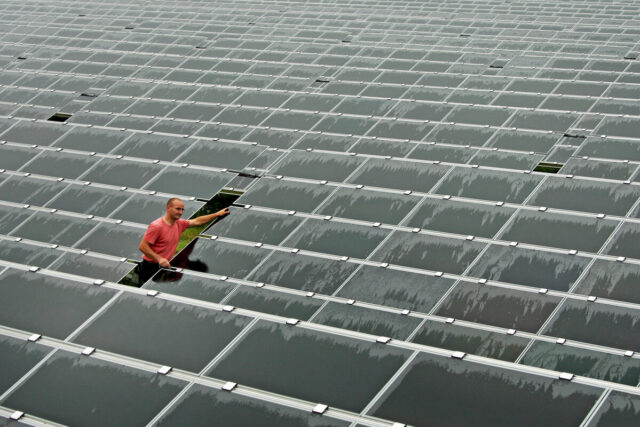The solar thermal is a somewhat forgotten sister Photovoltaics. Instead of electricity, heat is carried out with solar energy. The photoelectric inciting flourishes, in 2023 the systems with 14,600 megavatts were rebuilt, and recording. And this was again surpassed last year with 16,900 megavatts. The transformation of solar energy in the heat is less in demand: in 2022, the recently installed performance was a little less than 500 megavatts, in 2023 it dropped to 263 megavatts, last year even 154.
Solar thermal energy is one of the most effective renewable heat sources. “For each hectare, about three times more energy can be used than with a photoelectric point,” says Eric Jelink, project manager at Leipzig Stadtwerke. The system is an important component of the municipal thermal plan, with the help of which the city fair wants to cover the needs for heating and hot water of 630,000 inhabitants free of greenhouse gas.
Expansion has been working since the beginning of the year, and a solar thermal system should also be built in the south of the city. In addition, the “Power to Heating” system is planned: if there is excessive electricity from the wind or photoelectric, it must convert it into heat and submitted to the district heating network. In addition, the heat from the LENA chemical park should be directed to Leipzig and is used there.
First test stage, then full performance
The collectors of the vacuum tubes of the market leader are used in the solar thermal field in the West as a heat transfer of water. Management technology allows you to fully automatically control the system depending on the sun. “Technology measures sunlight in the collector’s field and controls the flow rate of water that heats up in collectors,” explains Paul Gaspar, engineer of the Ritter project. “The less the sun shines, the slower the water flows to warm up.”
In the third quarter, the system is now gradually checked and accepted on the network; since the beginning of 2026, it must ensure full performance. Leipzig Stadtwerke invests about 40 million euros, of which about 16 million euros will be financed, for example, by the federal government.
In Dresden-Räcknitz, the new solar thermal system has already done its trial work behind, also in Potsdam, Mühlhausen or Greyfswald, the Sun already supplies heat to the local network.
The Institute of Solar Energy Systems of Fraunhofer studied the economy of the heat of the solar process in industry compared to the usual heat supply. In many cases, solar heat systems turned out to be more economical than the work of purely fossil systems for the production of process heat.
So now is a new traction for the heat of thermal heat? In any case, Ritter explains: Leipzig West ”will be the largest solar thermal system in Germany for many years.”









